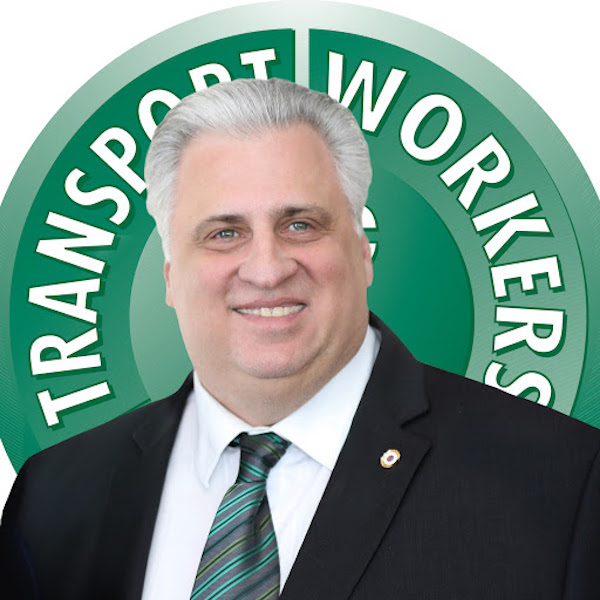NEW YORK, N.Y.—With subway and bus ridership recovering from its early-April nadir, Transport Workers Union Local 100 President Tony Utano says his main concerns are “the crowding situation and social distancing.”

Subway trains are cleaner and transit workers now have adequate personal protective equipment, Utano told LaborPress, but they are still at risk of being exposed to the COVID-19 virus from passengers, homeless people, and overcrowded locker rooms.
“The virus is still here,” he said. “I want to make sure my members are protected. I want the public to wear masks on the train. Until they have a vaccine, I want them to enforce that.”
On buses, where the Metropolitan Transportation Authority began blocking off the front section of buses in March and having passengers board through the rear door, Utano says the union and the MTA are considering installing larger protective barriers that surround drivers when things return to normal. Passengers would reach the farebox through a sliding door. This “would also solve assault problems,” he adds.
The MTA estimated subway ridership at about 945,000 trips on June 17. That was almost 90,000 more than the previous Wednesday and well above the record low of 365,000 on April 13, but still less than one-fifth of the weekday average for 2019. It estimated passengers took 975,000 bus trips on June 17, about 45% of the 2019 average, but that figure is less reliable because few buses are collecting fares.
That drastic drop meant that a large share of the remaining riders were homeless, especially late at night. Gov. Andrew Cuomo and Mayor Bill de Blasio’s late-April decision to close the subways for cleaning from 1 to 5 a.m. every night was largely intended to purge homeless people from the system. Many get back on the trains when they reopen in the morning, Utano says.
“No human being should live in the subways,” he says. “I want to protect my members, but I have a heart.”
He believes the federal government should fund building shelters with medical services, especially testing for COVID-19.
“This is not something [the MTA] will be able to manage. You can’t put a cop on every car and every bus,” he says. “If I was running for mayor, that would be number one on my list.”
Outside of exposure to the public, Utano says, the biggest infection hazard on the job comes in overcrowded swing rooms and locker rooms. Half the workforce is on standby now to lower that risk, he says. Building bigger locker rooms to enable social distancing, he adds, is not the union’s highest priority, but it has to be done.
More than 130 MTA workers have died from the virus, including 86 Local 100 members. Four of them worked at the Flatbush bus depot, most recently bus operator Lawrence Nieuenkirk on June 4.
“It was horrible for me to get calls every day. ‘We lost two.’ ‘We lost three,’” says Utano. The union has won a death benefit for the deceased workers’ families of either 50% of their pension or $500,000, as well as continuing their health-care coverage for three years.
“We need to get hazard pay,” he adds. “We moved the city 24 hours a day, seven days a week, when government was telling everybody to stay home.”
The HEROES Act, passed by the House in May but blocked in the Senate by Majority Leader Mitch McConnell (R-Ky.), would enable employers to apply for grants to give essential workers an extra $13 per hour during the epidemic, up to a maximum of $10,000.
Meanwhile, the subways are being disinfected every night — a practice Utano believes should continue after the epidemic subsides — and the MTA has bought 150 ultraviolet lights to see if they could be used to disinfect trains rapidly.
“We’re hoping to keep the virus at a minimum, and hope a vaccine comes soon,” he says. But if a second wave of the epidemic hits, “if you don’t have the personal protective equipment, we’re just not going to work.”

